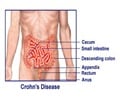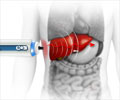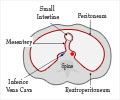Mutation in a hormone receptor found to prevent fibrosis could pave the way for a cure for Crohn’s disease, cirrhosis, chronic kidney disease and reverse aging.
Highlights
- Scientists discover a mutation in the hormone receptor that prevents fibrosis.
- This could pave the way for better drug targets
- Possible cure for Crohn’s disease, cirrhosis, chronic kidney disease and reversal of fibrosis in aging.
Mutation Preventing Fibrosis
The team of scientists discovered a mutation in mice that prevented the development of fibrosis. The mutation was found to silence a hormone receptor which was responsible for the stimulation of the immune system.
When the mice were infected with a type of Salmonella that mimicked the symptom of Crohn’s disease, the mutation prevented the development of fibrosis, thereby indicating its relevance in controlling symptoms for Crohn’s disease.
Co-author Dr. Kelly McNagny who is the co-director of Biomedical Research Centre at University of British Columbia (BRC) says about the discovery “We found what we think are the inflammatory cells that drive fibrosis. The gene that was defective in those cells is a hormone receptor, and there are drugs available that may be able to block that hormone receptor in normal cells and prevent fibrotic disease."
Crohn’s Disease
- It affects 700,000 Americans.
- It occurs in people of every age, especially between 15 to 35 years.
- Hereditary and genetic factors along with environmental complications are implicated in Crohn’s disease.
- 5-20% of affected individuals have a first degree relationship with another affected individual.
In severe cases of Crohn’s disease, it could result in the development of fistula which is the tunnel that connects one loop of the intestine with another or connects the intestine with the bladder, skin or the vagina. This situation would require immediate medical intervention.
Symptoms of Crohn’s Disease
The symptoms of the disease include
- Pain in the abdomen
- Abdominal cramps
- Need to move bowels is intense
- Rectal bleeding
- Fatigue
- Loss of appetite
- Children may see delay in growth spurt and development
- Delay in the normal menstrual cycle
People with this disease may see a period of flare up when the symptoms are very severe and then a period of remission when the individual will seem fine.
Post Medical Care
- Up to 5 years after treatment, 50% of patients remain on remission or on mild disease condition.
- A relapse free year is noticed in nearly 45% of patients.
- There may be one or two relapses in 35% of patients
- The disease may remain chronically active in 11% of patients.
Diseases that Include Fibrosis
There are a number of disease conditions that trigger fibrosis and which can potentially receive support from this research study. As McNagny concludes “We think that we can potentially block complications of all these age-related fibrotic diseases by dampening these particular inflammatory cell types."
Dr. Bernard Lo who is the lead author of the study adds "Fibrosis is a response to chronic inflammation, but it is also a process that occurs during normal aging. If you can reverse this, you've essentially found a way to promote regeneration rather than degeneration."
The study increases the potential for treatment for The team of researchers are currently working on testing to see if they can reverse fibrosis in mice, which would pave the way for a better treatment modality for patients with diseases that lead to fibrosis. The control of age-related fibrosis that might be afforded by this research could usher in a flurry of excitement in aging studies.
References:
- What is Crohn’s Disease? - (http://www.ccfa.org/what-are-crohns-and-colitis/what-is-crohns-disease/?referrer=https://www.google.co.in/)
- Facts about Inflammatory Bowel Diseases - (http://www.ccfa.org/resources/facts-about-inflammatory.html)
- Discovery offers hope for new Crohn's disease treatment - (http://www.eurekalert.org/emb_releases/2016-09/uobc-doh083016.php)
Source-Medindia
















